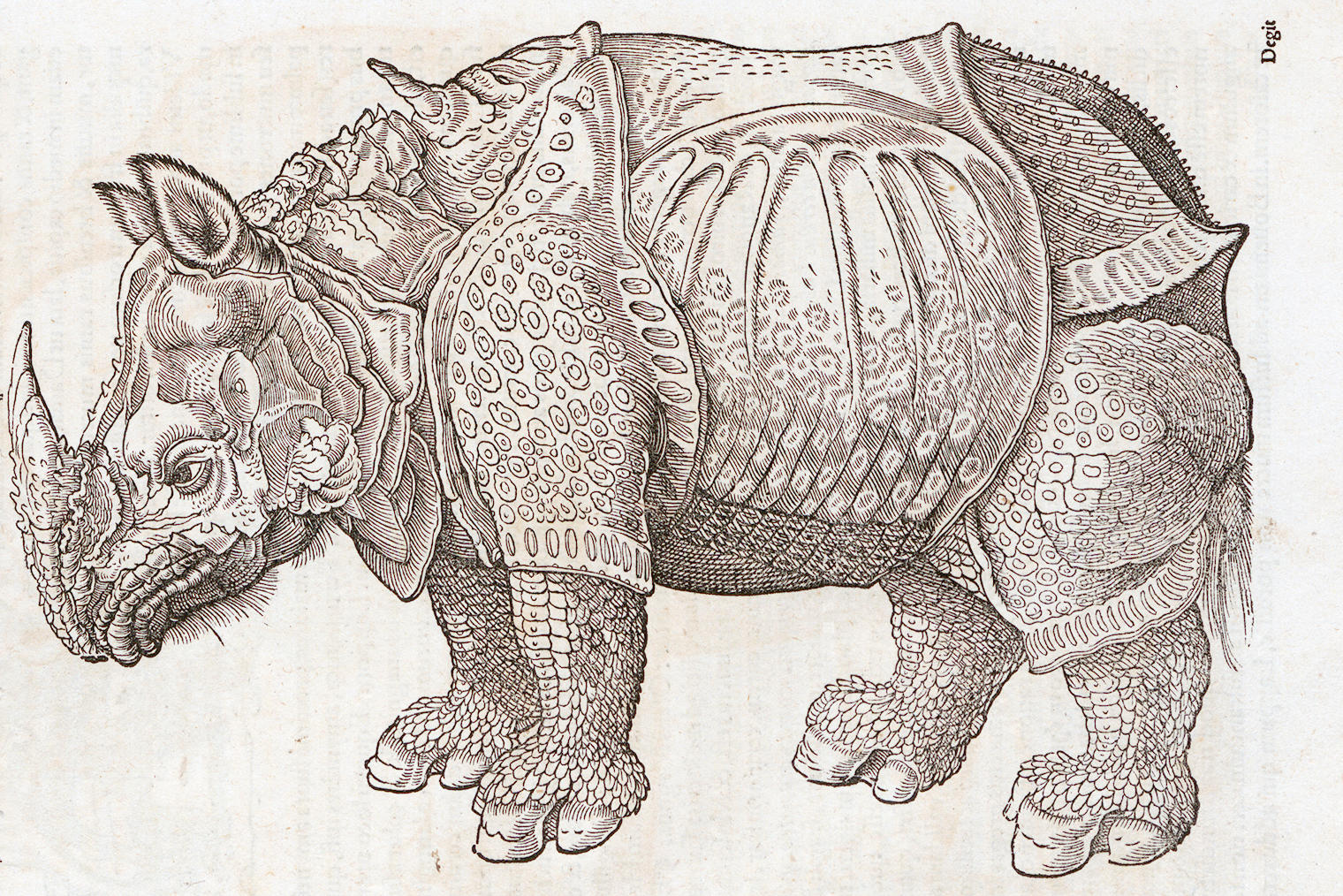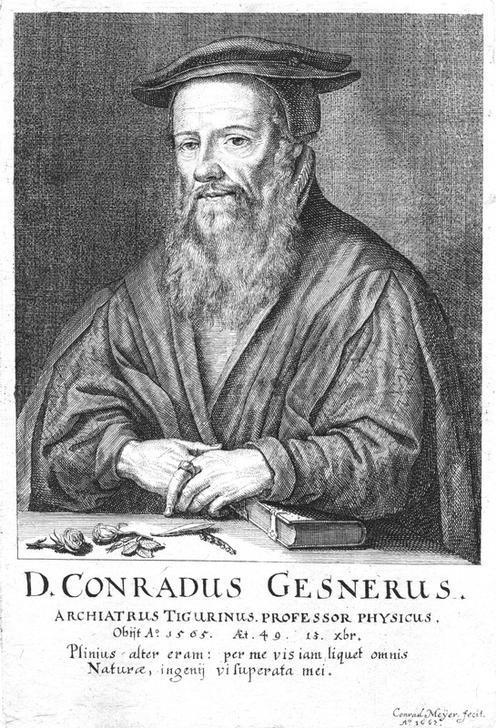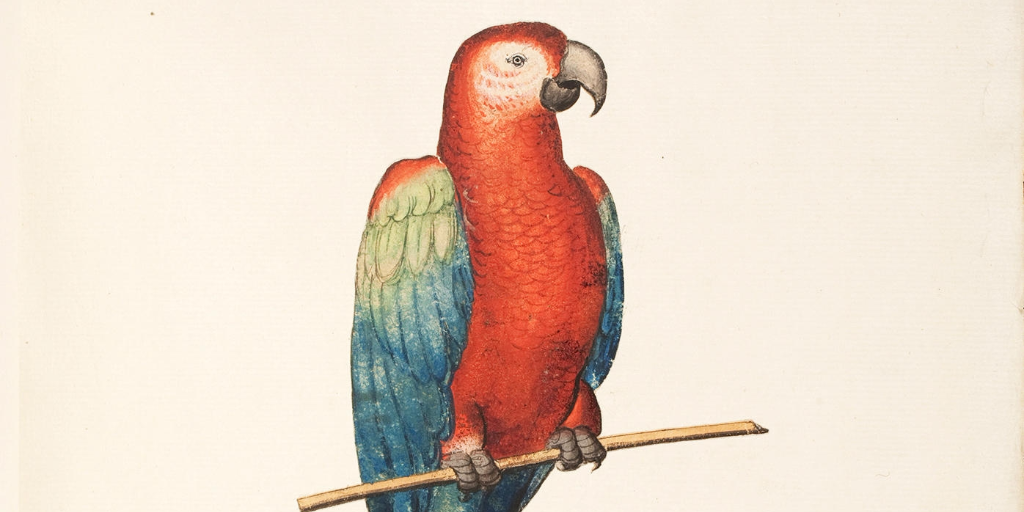Switzerland’s forgotten ‘Leonardo da Vinci’

For 16th century zoologists, it was like Google's arrival. Rather than punch a keyboard, they could thumb over Conrad Gessner’s sensational work – the world’s first-ever encyclopaedia of all known animals on the planet.
Gessner’s four-volume work in Latin, the ‘Historia animalium’ (History of the Animals), influenced zoologists for generations to come. Yet the Swiss scientist, who was born in Zurich and worked there as a city doctor and professor, remains little known in his homeland.
So for the 500th anniversary of his birthExternal link in 1516, the city decided to help people rediscover him.

Gessner grew up in a poor family but he was lucky to have his formidable talents recognised early. The great Zurich reformer Huldrych Zwingli was among those who encouraged him.
“Conrad Gessner is one of the most important scientists in Switzerland; he is the father of zoology, and also of bibliography. He studied botany, physics, chemistry, so he was really a scientist of what was known during his lifetime,” Alex Rübel, the director of the Zurich Zoo, told swissinfo.ch.
Zoology was in its infancy in the 16th century. However, it was an exciting time with the discovery of new animals in South America. It was within this context that Gessner embarked on his life’s work: the Historia animalium, which attempted to sort out all known animals and contained more than 1,000 of them – even mythical ones. Its four volumes arrived between 1551 and 1558.
‘Observe, dissect, describe’
His approach was rigorous: “The scholar should gather all animal texts and drawings – both traditional and contemporary – and observe, dissect, describe, and illustrate the animals himself. This enables the critical examination and clarification of established and new learnings. Then, the scholar should recombine the enormous mass of knowledge and arrange it anew,” he wrote.

More
Rhinos, blackbirds and sea monks
A visitor to the Zurich Zoo’s 500th anniversary exhibitionExternal link can observe that Gessner often hit the mark with his descriptions. For example, he was largely accurate in writing about camels, even how their stomachs work, despite relying on second hand information. His only inaccuracy was that camels’ feet would not last during long journeys.
“He corresponded with scientists all over Europe, from as far as Russia, and they all brought or sent him samples or drawings and obviously he had to rely on these. He also described what was written before by Aristotle and Pliny,” Rübel said.
Gessner, however, also was a talented artist, and he did many of the drawings included in his work. ‘Exotic’ animals like the elephant and rhino also are included, as are new discoveries like the armadillo and guinea pigs. Gessner was particularly precise about guinea pigs because he had some in his mini-zoo at home. They were a gift from an Augsburg doctor friend and caused a small sensation when they arrived in Zurich.
Mythical beasts
However, some of the creatures included may surprise modern readers. Visitors at the entrance to the anniversary exhibition at Zurich University’s Zoological MuseumExternal link are immediately confronted by … a unicorn.
“The ‘Historia animalium’ contained all the animals that Gessner thought existed or could probably exist,” explained the museum’s director, Lukas Keller.
“With the unicorn it was difficult for Gessner to judge, as it seems reasonable that it might exist: it looks a bit like a horse, it has a horn on its head and we have other animals about the same size with horns on their heads, so he left it in there,” he said.
Gessner, however, was very suspicious about the ‘sea monk’. “He says there is nothing that we know that combines a human with a fish anywhere else,” Keller said. ‘He’s right that he thinks it doesn’t exist, but he keeps it in because it is important for him to be complete.”
Keller describes the encyclopaedia as “a Google of its time”, presenting the animals in alphabetical order – not in biological order, as is commonly presented today. The aim was to “access information fast, precisely and efficiently”.
Gessner’s work and drawings were hugely influential until the 18th century publication of new encyclopaedias.
Nature and religion
Conrad Gessner in his own words on why he devoted himself to the study of ‘vulgar beasts’.
‘It is our duty to give greatest thanks to God that he has created so many great and wondrous things to beautify the world and also that he has vouchsafed us life, health, ease and understanding to marvel at these wonders.’
Gaining a reputation…. and losing it
Gessner also found time to work on a beautifully illustrated botanical encyclopaedia, though sadly he did not live to complete it. He caught the plague on his doctor’s rounds, and died in 1565.
Had it been completed, that work might even have surpassed the ‘Historia animalium’, says Urs Leu, who heads the rare book department of Zurich’s main libraryExternal link, which owns parts of the Gessner estate and has all of Gessner’s more than 60 publications in its collection.
Leu, the author of a new biography on Gessner, helped produce the major exhibition at the Swiss National MuseumExternal link for the 500th anniversary of Gessner’s birth. The exhibition also includes some newly discovered Gessner drawings, such as the famous tulip picture from his botanical work.
The exhibition looks at Gessner’s first extensive work, the ‘Bibiotheca Universalis’ (Universal Bibliography), the oldest known index of all handwritten and printed works in Hebrew, Greek and Latin. This book, published in 1545, was a huge success and made his reputation.
Gessner lived in exciting times, with the Renaissance, Humanism and the invention of the printing press, having been born at the end of the Middle Age and at the birth of modernism.
It is puzzling why this ‘Leonardo da Vinci of Switzerland’ seems more famous abroad than in his homeland, says Leu, who has lectured on Gessner in England, Germany and the United States.
Among the possible reasons, Leu says, are that Gessner wrote in Latin and there has not been much information available about him as a person. From his letters, he comes across as a quiet thinker and, unsurprisingly, a workaholic; he was also quite devout.
With this year’s exhibit, Gessner might finally cut a higher profile among the Swiss.
The anniversary at a glance:
Exhibition at the National Museum Zurich in cooperation with the Zentralbibliothek Zurich. 500th anniversary of the birth of Conrad Gessner (1516–1565), March 17 to June 19, 2016.
Exhibition at the Zurich Zoo, Conrad Gessner: the first modern man and the father of zoology, March 17 to October 23, 2016.
Exhibition at the Zoological Museum of the University of Zurich, Animals from A to Z – The animal books of Conrad Gessner (1516–1565), March 17-September 11, 2016
Exhibition at the Botanical Gardens of the University of Zurich, From the tropics to your living room – the diversity of Gesneriaceae”. May 27 to October 2, 2016 | 9.30 a.m. – 4.45 p.m.
International Conference on Conrad Gessner, Institute for Swiss Reformation History, Department of Theology, University of Zurich June 6-9, 2016.
NZZ Libro Verlag has produced a new biography entitled “Conrad Gessner (1516–1565)” by Urs Leu. There is also a documentary filmExternal link.

In compliance with the JTI standards
More: SWI swissinfo.ch certified by the Journalism Trust Initiative


You can find an overview of ongoing debates with our journalists here. Please join us!
If you want to start a conversation about a topic raised in this article or want to report factual errors, email us at english@swissinfo.ch.